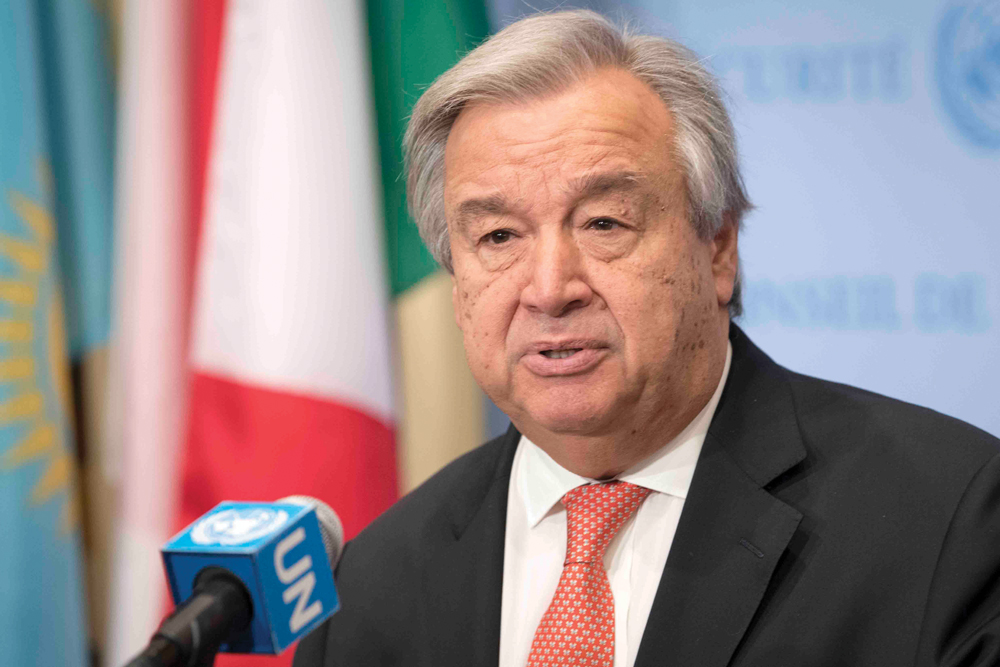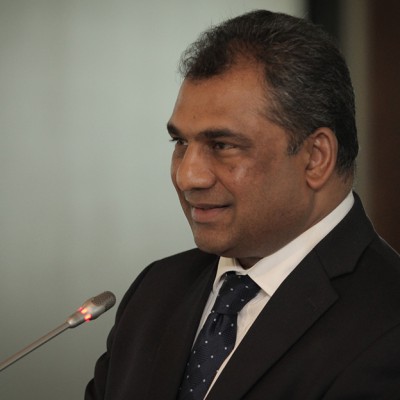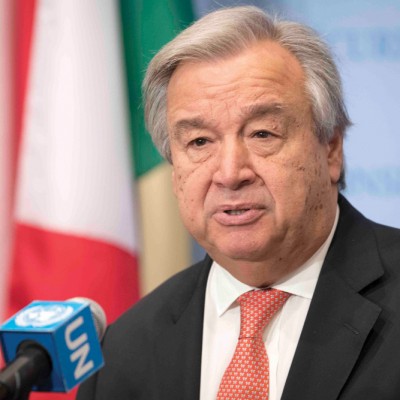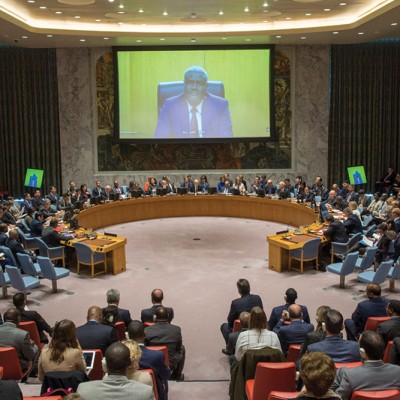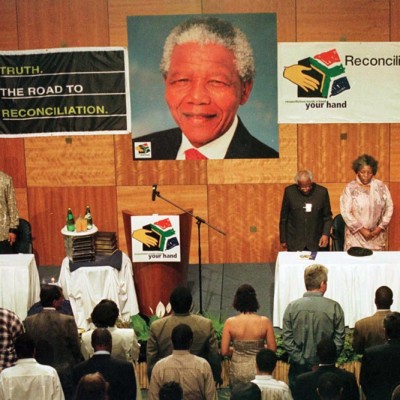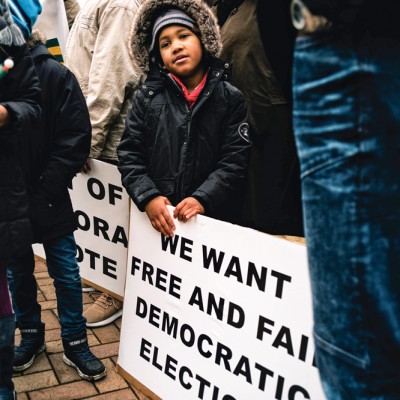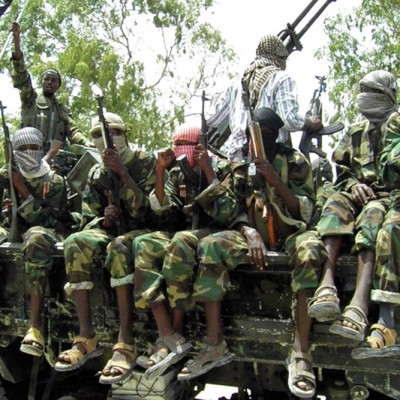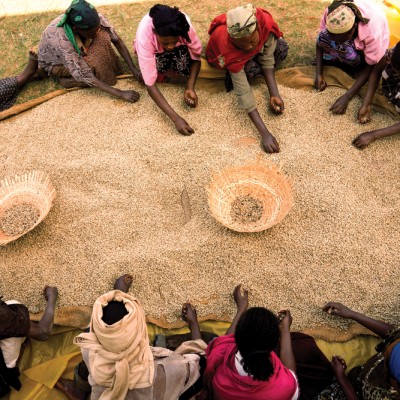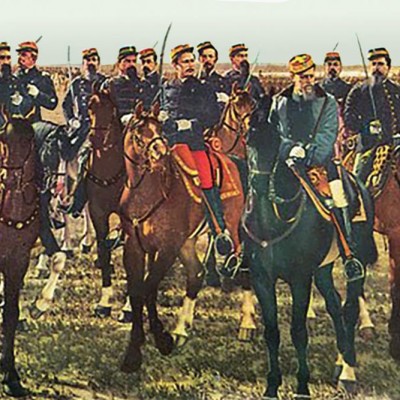Introduction
When United Nations Secretary-General António Guterres took up his post in December 2016, he observed that “conflicts have become more complex and interlinked than ever before”.1 The increase in complexity that Guterres refers to stems in part from a proliferation in the range of national and transnational stakeholders and interests that affect peace processes. We are now concerned with, for instance, the roles that governance, corruption, organised crime, increasingly fragmented opposition movements, violent extremism, the environment, gender, youth and natural resource management play in contributing to – or hindering – conflict resolution. The proliferation of actors and threats stretches the limits of traditional state and multilateral mediation processes.
The challenge of navigating complex stakeholder landscapes is compounded by dynamic, interconnected and unpredictable local to global societal processes. Digital interconnectivity allows people to mobilise in ways that was not possible just a few years ago. The more the world is globalised, the more changes one factor can have in unpredictable and unintended political, economic, migration or conflict consequences elsewhere.
The consequence of increasing complexity for peacemakers is that there are more variables that can affect peace processes, less stability in the behaviour of these variables, and less predictability when it comes to how peace and conflict processes are likely to unfold. Complexity therefore renders rigid adherence to analysis, plans and structures ineffective and potentially harmful.
In the Democratic Republic of the Congo (DRC), for instance, Eriksen has argued that the state-building project of external actors has failed, in part, because their designs have been based on fixed, non-negotiable conceptions of what the state should eventually look like, without due regard to the complex and evolving interests and relations between domestic powers.2

The “determined-design” thinking inherent in traditional peacebuilding approaches is fundamentally at odds with the dynamic, non-linear and unpredictable behaviour of complex social systems.3 Determined-design thinking is based on static conflict analyses and linear planning. It underestimates how dynamic contexts are and overestimates the ability of international experts to understand complex local issues and interests. It leads mediators to mistakenly extrapolate linear causal trajectories, when the interaction between cause and effect in complex systems is rarely linear or proportionate. Determined-design thinking causes mediators to undervalue the uniqueness of local context and overestimate the transferability of models, and leaves them surprised when their efforts generate unintended consequences.4
Adaptive mediation is a set of principles and practices that are more suited to the challenges of mediation processes in complex environments. Coleman and colleagues define adaptive mediation as “the capacity to read important changes in the fundamental dimensions of mediation situations and to respond to them with strategies and tactics that are more ‘fitting’ and thus more effective in those situations”.5 Adaptive mediation in the context of resolving interstate or intrastate armed conflicts recognises that uncertainty is an intrinsic quality of complex social systems, not a result of imperfect knowledge, inadequate planning or poor implementation.6 Adaptive mediation employs tools that anticipate complexity and help mediators of peace processes cope with uncertainty, setbacks and shocks.
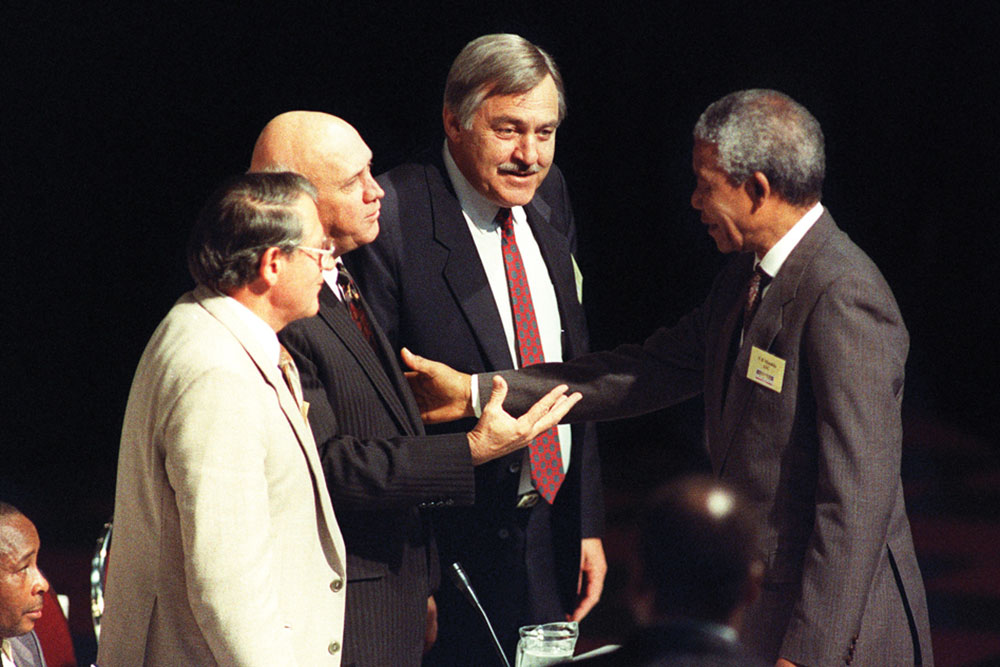
Two concepts that are important for adaptive mediation are resilience and self-organisation. Resilience refers to the capacity of social institutions “to absorb and adapt in order to sustain an acceptable level of function, structure and identity under stress”.7 Self-organisation refers to the ability of a complex system to organise, regulate and maintain itself without a controlling agent – for example, the way an ecosystem such as a coral reef or wetland regulates itself. In complex social systems, the resilience to withstand shocks and challenges grows as social institutions develop increasingly complex forms of self-organisation, which distributes and dilutes vulnerability across a network of interdependent parts. In a mediation context, self-organisation refers to a stage in a mediation process when the parties recognise their interdependence, and when they start to work collaboratively towards mutually acceptable agreements. Agreements reached through self-organised mediation are more resilient because the ownership is distributed among all the participants who co-created it.
The South African case is an example of self-organised mediation. The formal Convention for a Democratic South Africa (CODESA) multiparty talks (1992–1994) were managed by the parties themselves. The talks broke down on several occasions due to various setbacks, such as violent massacres or the inability to find common ground on certain particularly challenging issues. However, the relationships that had developed among the parties were resilient enough to enable them to find ways to resume talks and ultimately reach an agreement.
Adaptive mediation challenges mediators to accentuate rather than constrain the agency and interdependence of the parties. It focuses more on process or means rather than preconceived ends, and contrasts with top-down approaches that promote the adoption of pre-existing international standards, norms and models. Adaptive mediation encourages a process whereby the content of agreements emerges from interaction among the participants, and where the emergent dynamics of the mediation process create the basis for the ultimate sustainability, resilience and implementation of the agreements reached.
An Adaptive Approach to Conflict Analyses, Planning and the Assessment of Results
It is widely recognised that mediation planning needs to be informed by comprehensive conflict analyses. A prevailing assumption is that if one applies a reputable methodology, conflict analysis will enable the mediation team to identify the contextual components necessary to formulate an effective peacemaking strategy and tactics.
Adaptive mediation, however, recognises that our ability to understand complex systems is inherently limited and time-bound. Complex social systems are dynamic, non-linear and emergent. This means that both the causes and consequences of conflict are continuously evolving. An adaptive approach recognises this dynamism and responds with an iterative process that continuously generates new analyses, as well as regular reflection points, where teams or organisations reflect and make judgements regarding the changes they have identified and their implications. An adaptive conflict analysis methodology enables mediation support teams, and the parties, to continuously adapt their strategies and approaches to the changing context.
Adaptive mediation encourages the maximum possible participation of the parties themselves, whether independently or together, so as to encourage self-organisation and resilience. The more the parties (or their proxies or constituencies) participate in conflict analysis, the more likely the process is to reflect indigenous narratives and perspectives relevant to the context, rather than the assumptions, interests and biases of external experts. Participatory conflict analysis across conflict divides can be a source of tension (or even impossible, in the early stages of a peace process) – but when skilfully facilitated, it can be a source of common understanding and stronger ownership of mediated outcomes.8

Applying an adaptive approach to mediation in the face of uncertainty does not imply that we cannot plan, but it does suggest that we must depart from linear and causal log-frame-type planning approaches. Murray and Marmorek argue that an adaptive approach allows “activities to proceed despite uncertainty regarding how best to achieve desired outcomes… in fact, it specifically targets such uncertainty… and provides a science-based learning process characterised by using outcomes for evaluation and adjustment”.9
Adaptive mediation approaches planning as an iterative exploration and adaption process that continuously co-evolves with the system it is attempting to influence. Adaptive mediation employs variation and selection to generate a variety of hypotheses or options for achieving objectives, and institutes a selection process that identifies which options to explore further and which to discontinue. In contrast to traditional approaches, the adaptive approach does not privilege one potential solution or end-state, but purposefully pursues a variety of options simultaneously. For instance, adaptive mediation may simultaneously employ multiple track approaches to engage with potential parties, or concurrently probe different topics for negotiation.
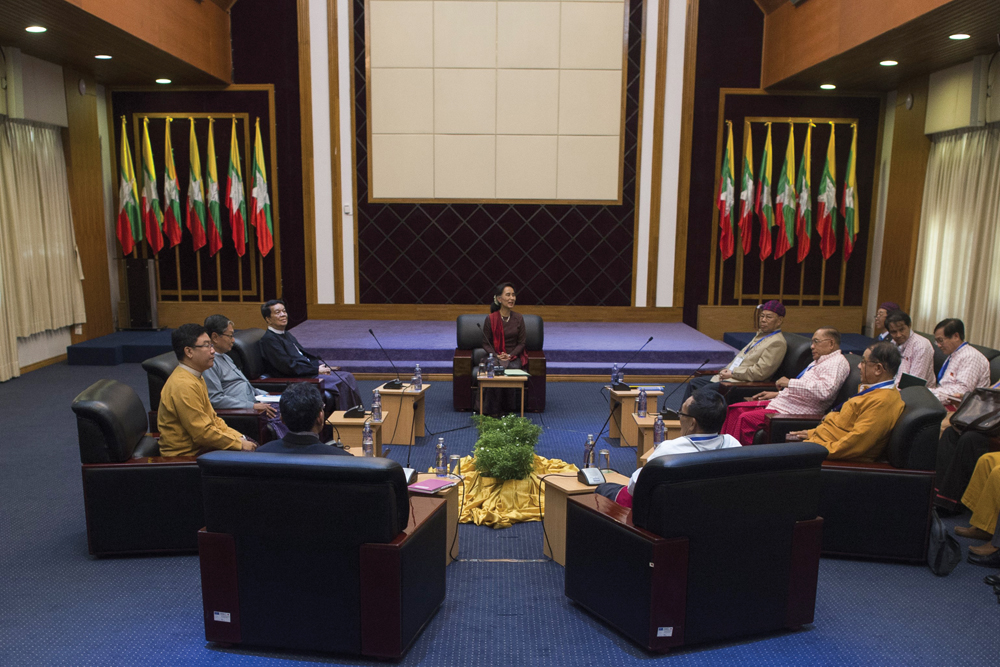
Myanmar’s internal mediators and parties explored a wide variety of peacemaking options during the early stages of the country’s post-2012 peace process. Bilateral ceasefires, deeds of commitment, informal political dialogue framework negotiations and covert military to military talks were attempted – often in parallel – before a mutually agreeable peace roadmap, centred on the 2015 Nationwide Ceasefire Agreement (NCA), was reached. However, by binding momentum and progress too closely to the NCA, the peace process has since lacked alternative pathways to tackle the challenges of a lack of inclusion, weak implementation capacity and escalating violence.
When multiple options are explored, special attention must be paid to the feedback generated by these different initiatives. Feedback enables purposeful, selection-based adaptation of the mediation process, whereby underperforming options are modified or abandoned and promising options are expanded.
Our linear determined-design assumptions also influence how we assess success and failure, and are poorly suited to complex, dynamic peacemaking environments. Ramalingam observes: “The reporting requirements of some traditional monitoring and evaluation approaches have, in some instances, regrettably left no room for ‘honourable failure’, reducing donor and practitioner scope for calculated risk-taking and innovation.”10 Wadley observes: “Traditional monitoring and evaluation methods are not well suited to this task, typically imposing artificially linear project models on a dynamic conflict situation, as well as compliance reporting that moves attention away from real value.”11
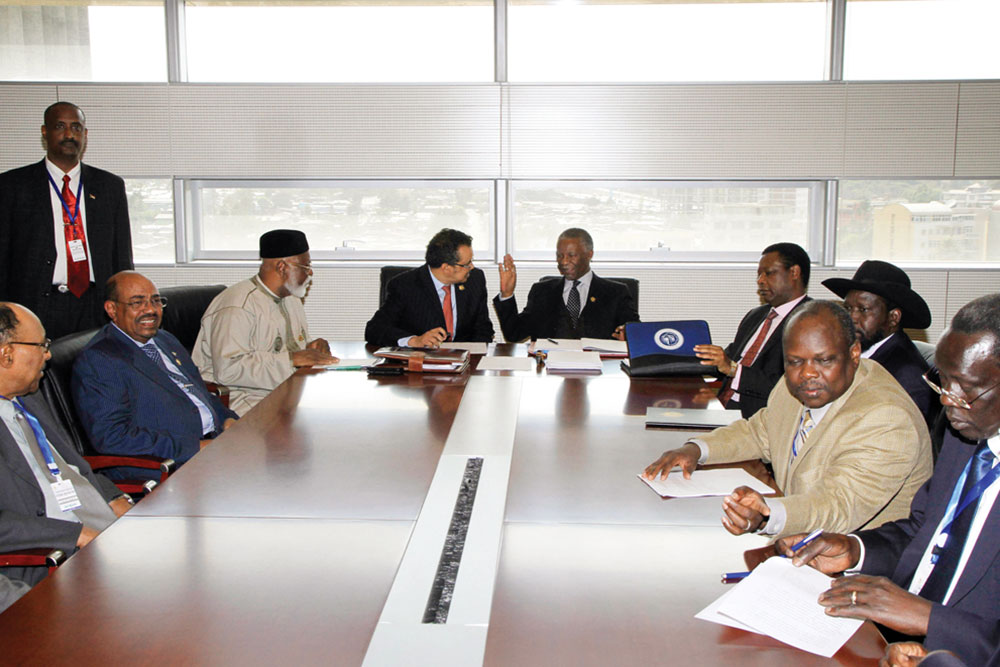
An adaptive monitoring and evaluation model, proposed by researchers at The Centre for Humanitarian Dialogue, seeks to better assess real value in uncertain mediation contexts by ensuring that assessment measures the quality of the process, not just observable results. This is achieved by assuring the quality of professional judgements through peer review, assessing a project’s strategic logic and its implementation, and measuring observable results wherever possible.12
An additional imperative for monitoring and evaluation in adaptive mediation is to shift the focus from pure accountability and more towards real-time learning and adaptation. Mediation teams must reflect regularly – weekly, monthly or quarterly – to consider the continued validity of their hypotheses, or which options to disregard or pursue based on feedback from the context. As far as possible, this process should be conducted with the parties or their constituencies, to stimulate self-organisation and resilience. To encourage timely adaptation, the sources of feedback available to the mediation team must be systematic (that is, drawn from a diverse spread of actors and issues that could affect the mediation), timely (that is, preferably before rather than after context changes have affected the mediation) and accurate (that is, ideally verifiable, or not adversely affected by stakeholder bias).
In adaptive mediation, conflict analysis, planning and the assessment of results should not be understood as sequential steps in a linear project cycle with a defined beginning and end. Instead, they should be approached as interdependent dimensions of an iterative adaptive process that is undertaken simultaneously. For example, an adaptive mediation process can include iterative cycles of meetings within or between parties (or their proxies or constituencies) that simultaneously (a) reflect on the conflict context, dynamics and drivers, and the implications for planning and implementation; (b) reflect on current activities under implementation, considering the viability of existing or alternative options; and (c) derive lessons and data to serve both internal decision-making (planning) and external accountability functions. Jordan’s social dialogue on gender, for example, included regular two-step reflect and adapt iterations, where national and international partners reflected and then changed course related to process design, allocation of resources, discontinuing or piloting initiatives, and how best to use data.13

Facilitating Mediation Processes for Self-organisation and Resilience
In this section, we turn our attention to the role of the mediator and how self-organisation and resilience can be encouraged in mediation processes. Adaptive mediation suggests that when the aim is a self-sustainable peace agreement, mediators should, as a rule of thumb, apply a light touch. They should protect parties from external interests and agendas, foster inductive processes that maximise the capability of parties to self-organise, and generate agreements that are rooted in the local context and narrative.
The quality of a peace agreement should be assessed on its sustainability – that is, the degree to which the parties are committed to implementing the agreement on their own after the mediation has ended. Many peace agreements fail to be implemented because the parties don’t sufficiently own the mediation process or subsequent agreements. Important indicators of the sustainability of an agreement include the resilience of the mechanisms agreed to for implementation, such as the extent to which the agreement puts in place processes that can manage future disputes or emergent issues.
Peace agreements that are not strongly owned by the parties lack resilience and sustainability. Implementation breakdowns are common – for example, when international mediation processes coerce parties to go along with processes, agreements or externally conceived end-states (such as an accelerated election timetable) that do not necessarily reflect their interests or are not viable for implementation in the local context. One example is the August 2015 Agreement on the Resolution of Conflict in the Republic of South Sudan (ARCSS), which has been criticised for being “imposed on the conflict parties by South Sudan’s neighbours”, contributing to a lack of political willingness or “selective implementation” by some parties.14
With adaptive mediation, the aim of the mediator is to provide the benefits of external intervention without undermining self-organisation. Every time a mediator intervenes to solve a perceived problem among the parties, they interrupt internal feedback and deny the parties the potential to respond to a challenge together, thereby deepening their interdependence. The result is a lost opportunity to develop self-organisation and resilience.
Too little facilitation, however, may result in a lack of purpose, deadlocks or breakdown. External influence has many advantages, including bringing leverage, encouraging accountability, opening political space and encouraging more inclusive processes. The key to successful adaptive mediation lies in finding the appropriate balance between external facilitation and self-organised mediation.
Adaptive mediation also recognises the inherently political nature of mediation. Choices regarding who gets to participate and what criteria will be used to decide which items are on the agenda, or in which order they will be discussed, all have political dimensions and political effects. A decision to pursue a particular initiative may face pushback from those who may view it as harmful to their interests, or who were excluded from the process. All these choices are influenced by political judgements about who may lose or gain – and as a result, it is rare that the “technical” aspects of a mediation will override what is seen as politically feasible in a given context. Even with the best expert advice, no mediator can replace the role of the political marketplace to effectively discount all political interests and considerations. Thus, as the South African example cited earlier demonstrated, the less the mediator directs the outcome, the more the parties themselves will self-organise, and in the process develop the ability to absorb and adapt to stress together, making the process more resilient to internal political trade-offs and external shocks.
Conclusion
Traditional state-based and determined-design models are ill-equipped to help mediators manage increasingly dynamic, complex and unpredictable violent conflict systems. This article explores an alternative approach: an iterative adaptive mediation process that enables the parties to generate solutions themselves, and which responds more nimbly to the challenges posed by complex conflict dynamics. With adaptive mediation, the aim of the mediator is to provide the benefits of external intervention without undermining self-organisation. When this approach is applied to conflict analyses, planning, monitoring and evaluation, the ability of mediation processes to navigate uncertainty and adapt to changing dynamics will be enhanced. For more resilient and self-sustainable agreements to emerge, adaptive mediation requires mediators to apply a lighter touch. This encourages greater interdependence among the parties and discourages dependence upon the mediator. Utilising an adaptive mediation approach should result in generating peace agreements that are more locally grounded, more self-sustainable and better able to withstand setbacks and challenges.
Endnotes
- United Nations (2016) ‘Secretary General Designate António Guterres’ Remarks to the General Assembly on Taking the Oath of Office’, Available at: <https://www.un.org/sg/en/content/sg/speeches/2016-12-12/secretary-general-designate-ant%C3%B3nio-guterres-oath-office-speech> [Accessed 11 January 2018].
- Erikson, Stein S. (2009) The Liberal Peace is Neither: Peacebuilding, State Building and the Reproduction of Conflict in the Democratic Republic of Congo. International Peacekeeping, 16 (5), p. 662.
- De Coning, Cedric (2017) Adaptive Peacebuilding. International Affairs, 94 (2), pp. 301–317.
- See, for example: Brusset, Emery, De Coning, Cedric and Hughes, Bryn (2016) Complexity Thinking for Peacebuilding Practice and Evaluation. London: Palgrave MacMillan, p. 34.
- Coleman, Peter, Kugler, Katharina and Chatman, Ljubica (2017) Adaptive Mediation: An Evidence-based Contingency Approach to Mediating Conflict. International Journal of Conflict Management, 28 (3), pp. 383–406.
- Popolo, Damian (2011) A New Science of International Relations: Modernity, Complexity and the Kosovo Conflict. Surrey: Ashgate, p. 209.
- Dahlberg, Rasmus (2015) Resilience and Complexity: Conjoining the Discourses of Two Contested Concepts. Culture Unbound: Journal of Current Cultural Research, 7 (3), p. 541.
- Gray, Stephen and Burns, Danny (forthcoming) Systemic Action Research and Adaptive Peacebuilding in Myanmar.
- Murray, Carol and Marmorek, David (2003) Adaptive Management: A Science-based Approach to Managing Ecosystems in the Face of Uncertainty. Prepared for the Fifth International Conference on Science and Management of Protected Areas: Making Ecosystem Based Management Work, Victoria, British Columbia.
- Ramalingam, Ben, Jones, Harry, Reba, Toussaint and Young, John (2008) Exploring the Science of Complexity: Ideas and Implications for Development and Humanitarian Efforts. ODI Working Paper 285, Overseas Development Institute.
- Ibid.
- Wadley, Ian (2017) Valuing Peace: Delivering and Demonstrating Mediation Results. Geneva: Centre for Humanitarian Dialogue.
- United States Agency for International Development (2016) ‘Collaborative Learning and Adapting for Better Social Dialog for Gender in Jordan’, Available at: <https://usaidlearninglab.org/library/collaborative-learning-and-adapting-better-social-dialogue-gender-jordan> [Accessed 14 May 2018].
- Buchhold, Christina et al (2017) Peacemaking in a New Era of Geopolitics. Geneva: The Centre for Humanitarian Dialogue, p. 10.

